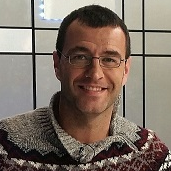Determination and Extraction of Heavy Metals from Wastewater and Other Complex Matrices, Volume II
A special issue of Applied Sciences (ISSN 2076-3417). This special issue belongs to the section "Environmental Sciences".
Deadline for manuscript submissions: closed (30 November 2021) | Viewed by 4355
Special Issue Editors
Interests: environmental chemistry; heavy metals in the environment; bioaccumulation in aquatic plants and animals; bio indication using fish and other sentinel organisms; ionic liquids for heavy metal removal from natural waters; applications for heavy metal analyses in difficult matrices
Special Issues, Collections and Topics in MDPI journals
Interests: environmental chemistry, heavy metals in the environment, trace metals in marine systems; metal speciation in marine waters; ionic liquids for the extraction of heavy metals; micro-extraction techniques for sample preparation
Special Issues, Collections and Topics in MDPI journals
Special Issue Information
Dear Colleagues,
Heavy metals in complex matrices, such as wastewater and natural waters with high salinity, present several challenges. The analyses of these elements call for intensive sample pretreatment to avoid the interference of matrix components during the analyses, or the need for preconcentration of the analyte. On the other hand, the removal of heavy metals from such matrices calls for the development of task-specific methods and materials that show low interaction with matrix components, such as major ions and organic materials, and a high specificity towards the targeted metals. For this Special Issue, contributions are welcome that address the development of new methods for analyses and/or the removal of heavy metals from wastewater and other complex matrices.
Prof. Dr. Franz Jirsa
Prof. Dr. José A. López-López
Guest Editors
Manuscript Submission Information
Manuscripts should be submitted online at www.mdpi.com by registering and logging in to this website. Once you are registered, click here to go to the submission form. Manuscripts can be submitted until the deadline. All submissions that pass pre-check are peer-reviewed. Accepted papers will be published continuously in the journal (as soon as accepted) and will be listed together on the special issue website. Research articles, review articles as well as short communications are invited. For planned papers, a title and short abstract (about 100 words) can be sent to the Editorial Office for announcement on this website.
Submitted manuscripts should not have been published previously, nor be under consideration for publication elsewhere (except conference proceedings papers). All manuscripts are thoroughly refereed through a single-blind peer-review process. A guide for authors and other relevant information for submission of manuscripts is available on the Instructions for Authors page. Applied Sciences is an international peer-reviewed open access semimonthly journal published by MDPI.
Please visit the Instructions for Authors page before submitting a manuscript. The Article Processing Charge (APC) for publication in this open access journal is 2400 CHF (Swiss Francs). Submitted papers should be well formatted and use good English. Authors may use MDPI's English editing service prior to publication or during author revisions.
Keywords
- heavy metal analyses
- wastewater
- hypersaline water






